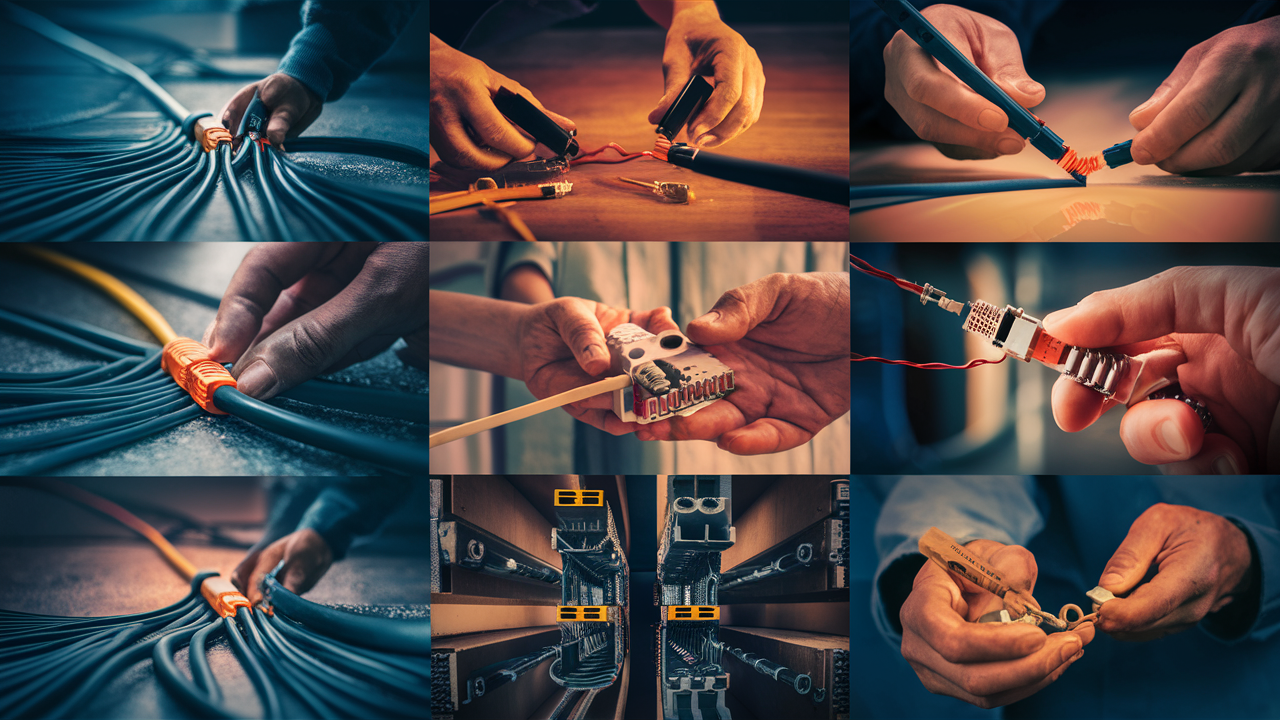What does fiber installation include?

Fiber optic installation refers to the process of laying down fiber optic cables in a network to enable the transmission of data and other information.
This article aims to highlight several crucial phases that are necessary for getting high-speed fiber internet in your home or business. It is here that any layman can get an understanding of the expectations and make the installation process smooth. Here’s an overview of what a typical fiber optic installation project includes
Site Survey
However, before the installation work, a technician is expected to pay a visit to the project site. This requires visiting the interior and exterior of the site to determine the detailing of the fiber optic cabling system.
The technician will evaluate:
- The point at which the fiber optic cables will connect to the building’s structure. This often includes making an opening for the cables from an outside junction box to the building by using a hole.
- Specifically, it is revealed that the best areas to install the networking equipment as well as the wall plates following cables are indoors. The considerations include near phone/TV mounting areas, access to the wall surfaces, and avoiding regions with intensive traffic.
- Physical hindrances can be created by the construction features of a building or other structures, furniture, and other forms of clutter. The target is laying out an optimal cabling path.
- The extent of cabling that is needed in the building so that all the necessary areas can be covered. More cables mean more contact points and hence more potential for the disease to spread.
The site survey provides the installation team with the information that is necessary for planning an installation schedule that will be specific to your building.
Permits and Access
Your service provider will ensure you get any permits that may be needed when installing fiber cables on your compound from nearby utility poles. Other areas that installers may require permission to access include personal properties surrounding your building if it is the best channel for the cables.
When it comes to getting cables inside, there are some general requirements that installers must meet: full access to all rooms and interior spaces is required. It is recommended that some time must be set apart to gain permission since doing so averts the problem.
Fiber Cable Deployment
Fiber optic cables are pulled at the center of the installation process and are the most crucial component of the installation process. The cables come with thin wires made of glass or plastic and pass information through visible light signals. Fiber gives the possibility to provide a very high-speed Internet connection.
The installers will:
- Connect cables to the premises via the entry point agreed upon; ensure that any hole used is well closed.
- This involves the use of cables running through walls, ceilings, attic or basement, and crawlspaces based on the site survey. Running cabling in the form of plastic cable trunking means that visible cabling is usually hidden in living areas.
- Before connecting any equipment, make sure there is enough loose cable at endpoints to maneuver around with. Any extra fiber will be bundled and stored in each bay or room as the case may be.
Network Equipment Mounting
Fiber optic internet service works via a particular modem/router hybrid device referred to as an optical network terminal or ONT. The incoming fiber cables must be directly terminated to this networking gear.
Specifically, installers will connect it to the existing fiber network, along with WiFi routers or network switches to disseminate the internet across the building. Equipment is often stored in the utility closet, garage, or basement ceiling or is wall mounted in some corner where it is least likely to be seen.
Further testing is conducted on the wall plate and cables where the capacitance of the wall plate is measured and the cables are tested for continuity.
These optical fiber cables installed throughout the premises must now connect to connection points on the wall. Installers are always keen to ensure that both ends of the cables are labeled, the cables are properly arranged to fit into the ports then fixed with the appropriate wall plate with the required labels. This finish work is the last to be established to ensure the physical cable connection is ready.
Each newly added fiber line also passes through a testing process. Specific tooling confirms everything functions in unison as other cables ensure all the required light-intensive fiber optic signals can be transmitted from one end to the other without a hitch.
ONT Configuration
If you have the functional fiber cables ready for the hookups then an installer will set up your networking equipment. This includes things such as account logins, the name and password of a WiFi network, connecting different devices, checking voltages are correct, and fine-tuning internet speeds.
It is the end-to-end connectivity and configuration of the ONT, routers, switches, and other equipment so that the devices are directly connected and can connect to the internet once the appointment is over.
Work Area Clean-Up
The preparation of fiber optic includes drilling such holes and having extra fiber optic cables pulled off the drums. The crew that is involved in the installation of the products will make sure the working area is clean before they leave your area.
This includes:
- Any openings within the interior or exterior of the dwelling must be closed neatly with neat patches.
- To separate excess cabling, you may have to put them in closets or ceilings.
- Sweeping/vacuuming to minimize dirt fragments and trash accumulation
- Returning the furniture to the pre-move positions
The installers want to leave the place in the best condition they found it in so that they are not noticed. A little cleaning enables customers to benefit from the fast fiber internet without the various challenges occasioned by construction work.
Installation Walkthrough
Lastly, the lead technician will briefly tour you through the completed installation of the fiber cabling to show the placement of the wiring, show you your networking gear, check the speed of the internet connection, and make sure the devices are properly connected and functioning.
You may have any questions that you have regarding the physical cables lying all over your building, the WiFi networking options, capabilities of ONT, or any other thing as you seek fiber optic internet services. Think about requesting the contact details which would be useful if help from the tutor is required at a later time.
After the installer leaves, you should be ready to embrace the benefits of a fast fiber optic Internet connection. As much effort is laid into each stage of installation, the final output is a strong structure well-designed for your home or business.
Upgrade to faster, more reliable AT&T Fiber Internet today! Call us at +1 844-905-5002 and get connected with speeds that keep you ahead.





